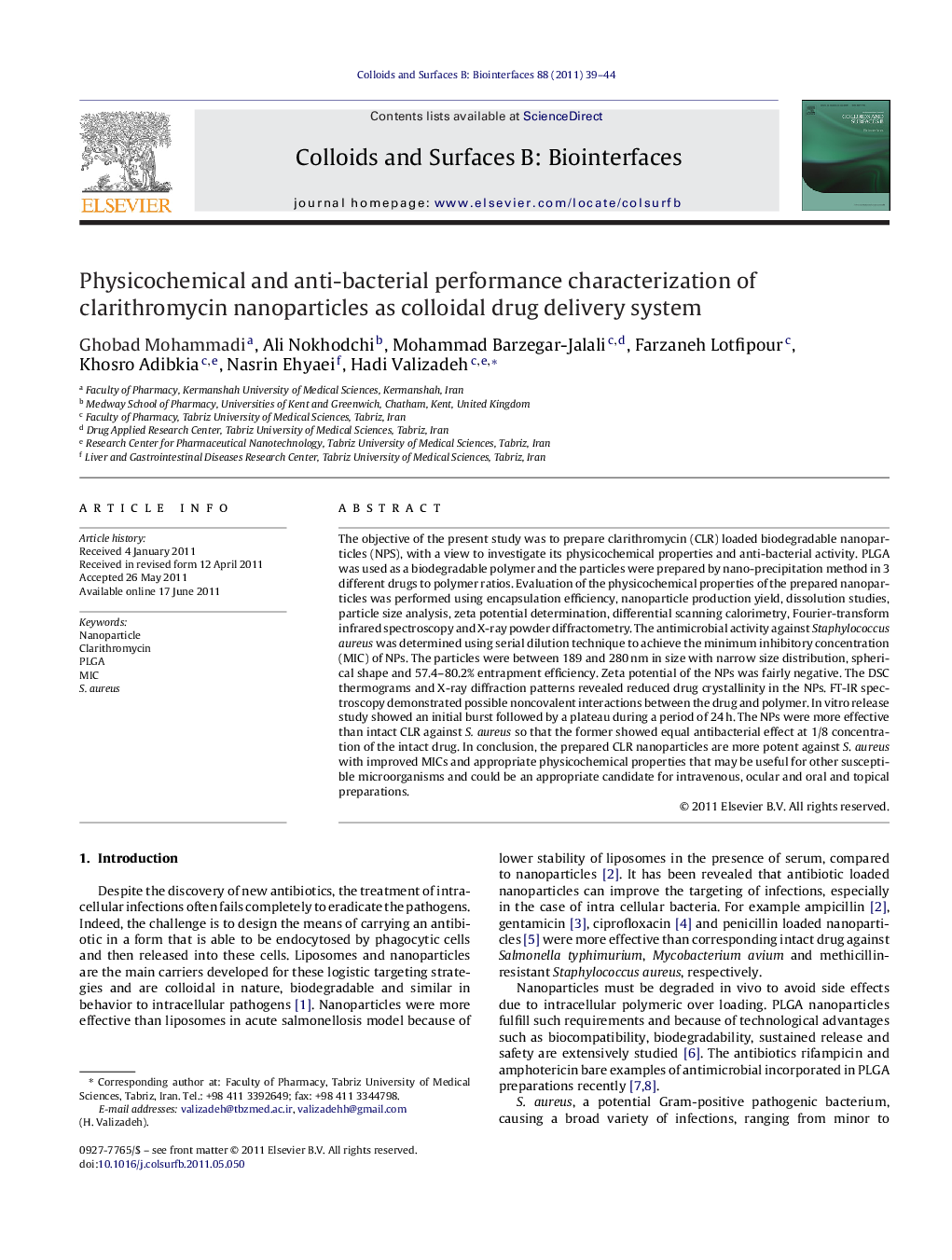| Article ID | Journal | Published Year | Pages | File Type |
|---|---|---|---|---|
| 601020 | Colloids and Surfaces B: Biointerfaces | 2011 | 6 Pages |
The objective of the present study was to prepare clarithromycin (CLR) loaded biodegradable nanoparticles (NPS), with a view to investigate its physicochemical properties and anti-bacterial activity. PLGA was used as a biodegradable polymer and the particles were prepared by nano-precipitation method in 3 different drugs to polymer ratios. Evaluation of the physicochemical properties of the prepared nanoparticles was performed using encapsulation efficiency, nanoparticle production yield, dissolution studies, particle size analysis, zeta potential determination, differential scanning calorimetry, Fourier-transform infrared spectroscopy and X-ray powder diffractometry. The antimicrobial activity against Staphylococcus aureus was determined using serial dilution technique to achieve the minimum inhibitory concentration (MIC) of NPs. The particles were between 189 and 280 nm in size with narrow size distribution, spherical shape and 57.4–80.2% entrapment efficiency. Zeta potential of the NPs was fairly negative. The DSC thermograms and X-ray diffraction patterns revealed reduced drug crystallinity in the NPs. FT-IR spectroscopy demonstrated possible noncovalent interactions between the drug and polymer. In vitro release study showed an initial burst followed by a plateau during a period of 24 h. The NPs were more effective than intact CLR against S. aureus so that the former showed equal antibacterial effect at 1/8 concentration of the intact drug. In conclusion, the prepared CLR nanoparticles are more potent against S. aureus with improved MICs and appropriate physicochemical properties that may be useful for other susceptible microorganisms and could be an appropriate candidate for intravenous, ocular and oral and topical preparations.
Graphical abstractFigure optionsDownload full-size imageDownload as PowerPoint slideHighlights► Clarithromycin loaded PLGA nanoparticles were prepared by emulsification method. ► Physicochemical properties of the nanoparticles were evaluated. ► The anti-bacterial activity was determined against Staphylococcus aureus. ► Improved physicochemical and antibacterial properties were observed.
